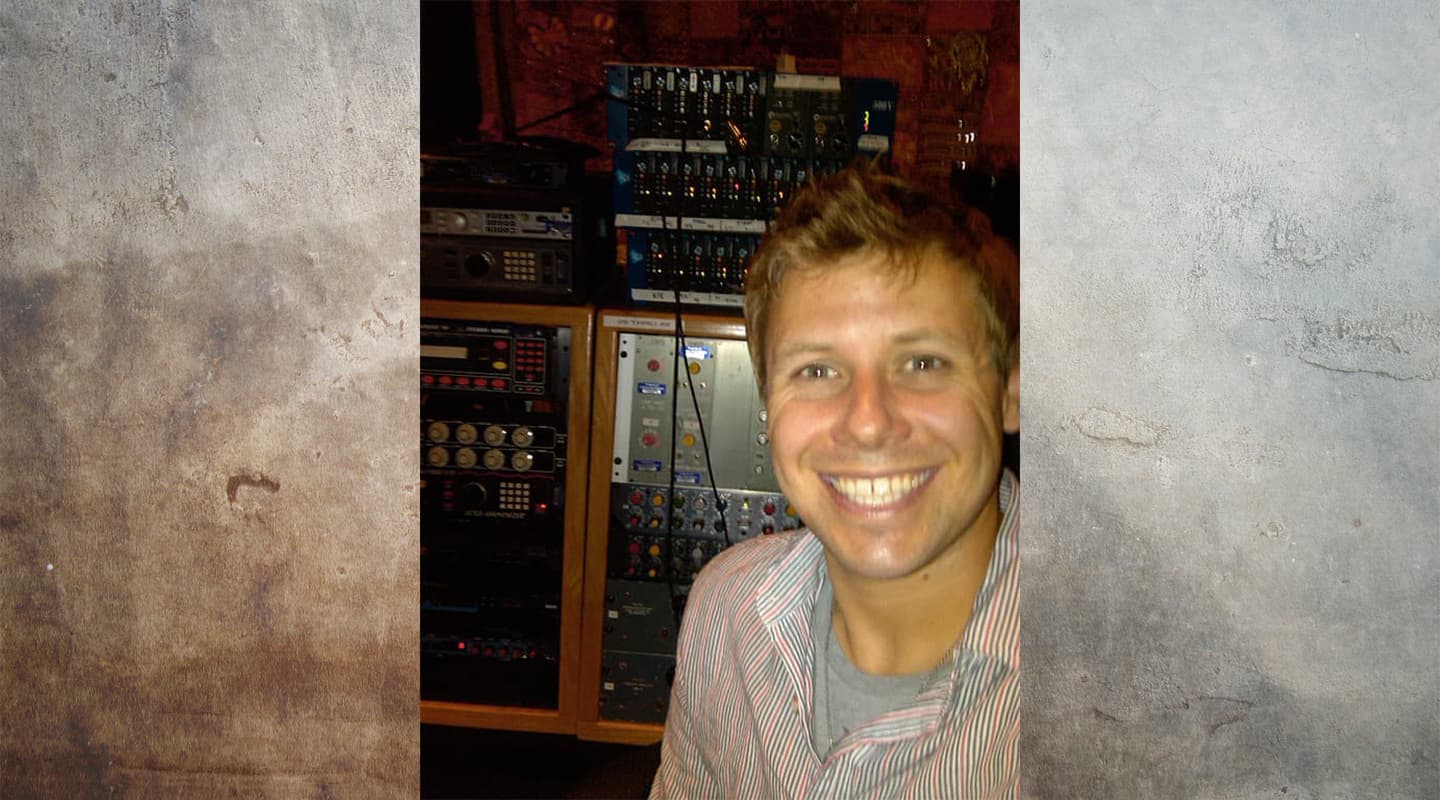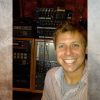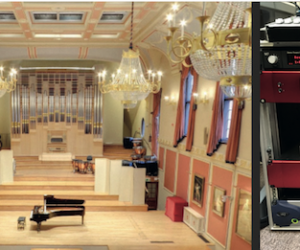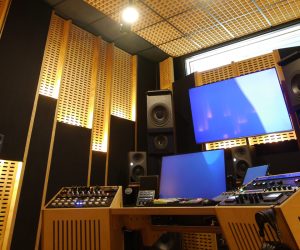
Royal Appointment: Recording Prince
Engineer Jason Agel recalls being summoned to Paisley Park to work on music that would posthumously be released as ‘Welcome 2 America’.

Artist: Prince
Record: Welcome 2 America
Engineering/Mixing: Jason Agel
One day in the summer of 2010, Jason Agel received the phone call every engineer dreams of. “Someone was on the line asking if I would be interested working with an artist from Minneapolis, but they could not tell me who it was. I obviously immediately suspected it was Prince. This was very exciting, and a bit weird as well. They called me again the next day, and the day after that, saying each time: ‘the artist is going to call you in half an hour and wants to interview you’. But it never happened. On the third day they called and said, ‘can you come over to Minneapolis, and stay here for three days? He can then work out whether he wants to work with you, or send you home.’”
At the time Agel was, and, in fact, he still still is, living and working as an engineer in New York. He worked his way up from tape op to engineer at Sony Music Studios, and went freelance after it closed in 2007. In 2010, he had built up something of a name for himself, with credits like Kanye West, Swizz Beatz, Björk, and Ozzy Osbourne, and he was doing a lot of work for Jay-Z’s Roc Nation.
Prince was putting on live shows with Roc Nation’s sister company, Live Nation, and apparently had asked around for a young engineer who might bring some new perspectives. Agel fit the bill: young, eager, enough experience, but not so much that he’d come with a wagonload of ego and fixed working methods. Although Prince did not know this, Agel was also a big fan of His Purple-ness. And so out to Minneapolis the young engineer flew, nervous and not knowing what to expect.
“They had booked a hotel for in Minneapolis suburbia, and I was picked up there the next morning by Morris Hayes, Prince’s keyboard player and the musical director of his band. He did a kind pre-interview with me and showed me around Paisley Park. Then Prince walked in, dumped a two-inch reel in my lap, saying that some parts of a song were on the tape and some in a Pro Tools session, and could I get everything to play nicely together. He said he’d be back in two hours. I dumped what was on the tape into the session and got a rough mix going. Prince came back at two in the morning, listened to what I had done, said, ‘this is great,’ and would not let me leave for a month!”
WILD TIMES
And so started Jason Agel’s strangest and ‘wildest’ experience as an engineer and mixer, at least to date. For most of the next half year he worked at Paisley Park, recording and mixing tons of tracks. It was an incredibly exciting time, but afterwards it became frustrating and puzzling for him that nothing of what he had worked on was released. A lot of the material only saw the light of day eleven years later, on July 30th, 2021, with the release of the album ‘Welcome 2 America’.
Featuring Tal Wilkenfeld on bass and Chris Coleman on drums on most tracks, as well as New Power Generation singers Liv Warfield, Shelby Johnson, and Elisa Fiorillo, plus Morris Hayes, ‘Welcome 2 America’ is the first complete, previously unreleased studio album by Prince released after his death in April 2016. Containing much social and political commentary, and the mixture of funk, rock, Latin, soul and other music styles that Prince is known for, it was met by mostly glowing reviews, and high positions in the charts. Why the album was never released in Prince’s life time remains a mystery.
HEALING
Bassist, Tal Wilkenfield, has explained that the release gave her ‘healing’ and ‘a sense of closure’, as it was finally possible for people to hear her work with Prince in 2010, and for her to talk about it. Similarly, until the album’s release, Agel always felt that it was impossible to integrate the experience into the rest of his life, or his career. Without the official credit, it might as well not have happened. “Yeah, it’s great that this is released, because I’ve been telling people the stories for a decade, and yet had nothing to show for it.”
One such story that hung in suspended animation involved a blizzard and one of Prince’s sports cars. “Prince often asked me at the end of the day to run off a CD-R of the recordings of his rehearsals that day, so he could work on new parts or critique his band mates’ playing. That night there was an intense blizzard, but in Minneapolis they have so many of them, people drive regardless. So Prince drove me back to my hotel, with his girlfriend next to him in the front, and played the CD-R while singing ‘Purple Rain’ to her. I’m sitting in the back, thinking: ‘This is ridiculous, I’m going to die in a car crash in a blizzard while Prince is serenading his girlfriend with one of the biggest songs of all time.’ It was a wild experience.”
PRINCELY SOME
After 11 years the detail of some of Agel’s memories have faded, particularly on the technical side. What has stayed with him vividly, however, were the personal interactions and Prince’s more general recording approach and philosophy.
“Paisley Park was his home and he was very welcoming. In the studio he’d bring me bowls of fruit. Or he would ask me if I wanted some tea or something like that. After the first night I was there, when I did the mix that he liked, he picked me up the next morning at the hotel. He arrived in a small sports car, with funk music blaring, and had sunglasses on and a mirror jacket on. Prince looked almost like a caricature of himself.
“He then drove me around Minnesota, talking about general things, like what the foliage would be like in the fall. We stopped and he got me coffee and we chatted. That is why it is harder to remember what microphones he used on the drum kit, for example, because the thing that has stuck with me most is how personable he was, and the crazy nature of the whole experience.
“The fact that he housed me in the suburbs of Minneapolis meant that I was kind of a prisoner in a hotel just off the highway. I had to be on call all the time, and, you know, suburban American is pretty much the same everywhere, with parking lots surrounded by a set of chain stores and a movie theatre. I was not in the centre of town, so I couldn’t really go anywhere. There also were days when he told me he’d come to pick me up, and he would never arrive. I once spent two days waiting for him, and when I finally got to Paisley Park, it turned out he’d recorded the song ‘1000 Light Years From Here’ with drummer John Blackwell.”
pointing at his API desk in Studio 2, he’d say, ‘we made Sign o’ The Times on this desk.’ Or he’d say, ‘this is the drum machine I used for ‘When Doves Cry’
PAISLEY TECH
When Prince discussed his approach to technology and recording with Agel, it quickly became clear that he had some unusual outlooks. “The first few days I was at Paisley Park he really took his time to talk with me about his recording philosophy. He showed me around, and for example pointing at his API desk in Studio 2, he’d say, ‘we made Sign o’ The Times on this desk.’ Or he’d say, ‘this is the drum machine I used for ‘When Doves Cry’.
“You often work with artists who get excited about a Neve mic pre they have, but Prince was not like that. He related to technology in a more spiritual way, as in ‘I made this record with that, and this means that it’s very special to me.’ He never said, ‘I like the way this particular thing sounds.’ What he did say to me was that he wanted to hear the air moving from the speakers, meaning he wanted to hear the performances more than he wanted to hear me tinker with things. He said that he wanted to hear me do my best work, but at the same time he did not want to hear my fingerprints on the recordings and my mixes.”
As was immediately apparent from the moment Prince placed a two-inch reel of tape in Agel’s lap, analogue recording was a central part of the Prince’s recording approach, but again for slightly unusual reasons. “I think he liked the sound of analogue, which was comfortable to him. But he did not talk about that. It also did not mean that he was scared of the computer. He wanted me to do all my mixes inside of Pro Tools, for example.
“I was told that one of his engineers in the ’80s got so tired of working all hours of the day, because Prince barely slept, that she taught him how to record on a two-inch multitrack tape machine, so he could record himself. He was far more comfortable sitting with the Studer tape machine remote than sitting in front of a Pro Tools screen, although he would sometimes do that too.
“He would often ask me to set him up with microphones, a headphone, and a two-inch, and he’d then record himself, or the backing singers he worked with, rather than have the new kid from New York in the room with him all the time. This was ergonomically easier for him, because he could just press record and stop, and if he was happy with the take, move along to the next one. But when you sit in front of a screen and start looking at what you have recorded, you start thinking about all the things you can do.”
DAILY GRIND
When Agel first arrived at Paisley Park, the writing and recording sessions with Tal Wilkenfeld and Chris Coleman had been completed and were all loaded into Pro Tools by engineer James ‘Fluff’ Harley. Agel’s work consisted of adding more overdubs, mostly vocals, guitars, and keyboards, and editing and mixing all material in Pro Tools. Morris Hayes also was strongly involved, resulting in a co-producer credit for him on many songs. As Agel already explained, Prince also recorded some songs from scratch, mostly by himself, amongst them was not only ‘100 Light Years From Here’, but also ‘1010 (Rin Tin Tin)’, and some as yet unreleased songs.
“The process varied per track and depended on what else Prince was doing,” recalls Agel. “Sometimes I got to the studio and it was just him and I in this massive facility, and he’d be doing something else while I was mixing. This actually was the case at the beginning of the day for most of the time. Then he might want to record overdubs alone, and I’d go out to lunch. Sometimes he’d be busy at the Soundstage working with his band and I recorded them to Pro Tools, or I organised the recordings and mixed them in Studio A. As I mentioned, at the end of the day I’d usually run CD-Rs for him of the work of that day, using the Alesis Masterlink ML-9600.
“The recording chain for Prince’s vocals was Telefunken Elam 251, going into an API mic pre, and then the Distressor. I changed the Distressor for an LA2A on some things. I definitely used the Pultec EQP-1A when tracking bass and the synths with Morris. I’d switch the patchbay to the tape machine when Prince was tracking himself, and I put it direct to Pro Tools when I was recording the track. I did not record to tape; I always went straight to Pro Tools.
“On a few songs, I did Prince’s vocal overdubs and some guitar solo overdubs with him in the control room. He’d be ripping through solos right next to me, so that was exciting! Despite him wanting to hear the air move through the speakers, when I suggested we use an amp, he said ‘no’ and pointed at Pro Tools. So I always recorded his guitar DI, into the desk and then the 192s, and we used Sansamp in Pro Tools. He was a big fan of the Sansamp plugin!
“It was my job to dump the two-inch tape recordings into Pro Tools. Although Prince wanted me to do everything in Pro Tools, I still tried to use as much outboard as I could. For example if I had four tracks of background vocals on tape, I would run them through the desk and some outboard gear, for example a Neve 33609 compressor. I’m sure I also used the SSL compressor on the desk. I was thinking, ‘this is an amazing studio, why not use some of the stuff while we’re here?’”

Jason Agel on a typical Pro Tools session template: “Just to give AT readers a sense of how I worked in the Paisley Park sessions, here’s a Pro Tools template with subgroups for lead vocals, and background vocals, and drums, and then a bunch of FX returns. I’d import these into each session as we were moving; drag them in and route vocals through the subgroups etc, and sum those through the SSL and out to the Masterlink for a CDR copy to give to Prince. Just so we could move quickly, I didn’t change the FX return plugins for you, but did for the vocal subgroups. I like to set up like I’m setting up for a mix on a console, so every Aux Send 1 on a track goes to the same destination. You’d never find random buses on my Aux sends. Always at least Aux 1-6 correlate.”
MIX MEMORIES
Because the sessions took place 11 years ago, and without access to the actual mix sessions in Pro Tools, Agel’s recollections of his process are sketchy. He does remember trying to incorporate outboard. “Time always was a big issue, because we were moving incredibly quickly all the time. But there were certain songs that Prince let me labour over a little more, and in those cases I did bounce things out of Pro Tools. I remember wanting to use the AMS RMX reverb on something, this was before the emulations, and I also sometimes used a hardware compressor on background vocals. I’m sure I used the SSL desk compressor and the GML 8200 EQ.
“But with most songs I just had to be very quick and do a mix in a few hours, and this meant I had to stay in the box. I would have used the many Waves and SoundToys plug-ins that were in the system, like the Waves Renaissance bundle and SSL 4000 plugins, Sansamp, EchoBoy, and so on. At the time, Pro Tools had the Fairchild, LA2A, Pultec plugins, and I would have used them. I would also use the URS plugins that I had in my template at the time.
“Because I had to work so fast, I imported my Pro Tools template into the sessions to speed things up. Back then I did many vocal sessions where you are recording one vocal after the next, and you’re mixing as you go, so I was accustomed to track very quickly, and get good blends very quickly. Prince’s sessions were not complicated and the basic idea of my template has not changed since then. I imported busses and FX returns into each session, so I could quickly group things like background vocals or drums, and get fast blends.”
ATTENDED SESSIONS
Although Prince often left Agel to his own devices, he nevertheless took a great interest in what Agel was doing. “He was a lot more involved and thoughtful than just showing up and playing. He wanted to control the entire process, and he did give me a lot of feedback. Sometimes he had a different vision for a song than where I was taking it, and he wanted me to tinker with it. He definitely would ask me to use certain reverbs and other plugins, particularly Sansamp.”
“I remember at one point adding a delay throw — very subtly because he had told me that he did not want to hear my fingerprints. He noticed it and said, ‘that’s great. If you want to try that, do it all the way. I want to hear the things you’re trying, I don’t want to hear just a hint of the thing you’re trying. Turn it up.’ So if I distorted something he wanted me to really distort it. We could always pull it back. I also recall him toying with AutoTune, but none of that ended up on this album.
“One thing that was tricky at that time: Prince’s Pro Tools rig was a couple of years old, and it was dragging. But he did not like the computer updating things. He did not like upgrades, and he also did not want me to back anything up! He caught me in the machine room one night backing up. I’d sneak in there sometimes, because you did not want to make him angry, but he was like: ‘No no no, we do not back things up.’ His rationale was that if God wanted it to go away, it would go away.”
CALL FOR BACK UP
The latter is one of several unusual anecdotes that Agel recounted. Although Prince’s refusal to back up suggests a careless attitude to his recordings, in fact, he was enormously protective of his hard drives, which led to an awkward situation in New York. “He was going to New York to do some postproduction for imagery for his tour at a video production facility there, and he asked me to find a recording studio for him to work in for a few days. I visited him at the postproduction facility, and I convinced him to give me a hard drive with his recordings so I could work on them in my home studio. He allowed me to do this, though normally he would not let these hard drives out of his sight.
“As per his request, I booked Avatar Studios for a few days. For the first three days he did not show up, and when he finally did show up on the last day, he took an instant disliking to the place when he saw that the studio assistant had put his hard drive in the machine room. It’s how we worked at Paisley Park, but he was upset that I had somebody else had touched his hard drive, and that it was in another room. I had some keyboards set up for him to do overdubs, but instead of playing, he was still so angry about the hard drive situation that he was just banging the keyboard and taunting me.
“Another time he got angry with me was when I had made him a CD-R that did not work. One out of three CD-Rs you made in that Alesis machine did not work, and at Sony I had learned to always test them before sending them out. But Prince would not let me test the CDs. So one day, when I was standing in front of Paisley Park, waiting with his band, Prince pulls up at the parking lot, driving very aggressively and parking his car diagonally, and he gave me a big scolding about the non-working CD in front of the band.
“Usually he was super sweet, but there also was a flipside. For me it was okay, but I felt for his band sometimes, as he could be really harsh on them. If Prince did not like what, for example, the drummer was playing, he would kick him off the drum kit, and he’d then play what he wanted the drummer to play, perfectly, and he’d say: ‘do that.’ The same thing with the keyboard player. He was not sweet about it. It was not abusive, but I’m sure it was pretty stressful for the musicians.”
END OF PARK LIFE
Agel’s time at Paisley Park eventually came to an end because he had other commitments, and Prince was not prepared to wait. “Three weeks or so after my first arrival, I remember approaching him in the kitchen, saying I have a family back in New York, and asking if I could go. He just said, ‘if you want to go, you can go. And then we’ll ask you to come back.’ So I went back home, and three days later the phone rang, and they said, ‘can you come back tomorrow?’ I did, and this pattern repeated itself a number of times until March 2011. At this point I was booked to do so sessions with John Legend, and we were working with Kanye and some other people, and I know this music would actually be released. After I told Prince a couple of times that I could not come over straightaway, he did not call again.”
It spelt the end of a tumultuous phase in Jason Agel’s career, one that may never had seen the light of day. Eleven years later, his work has been released for everyone to hear, exactly where he left off; his rough mixes left completely unchanged, albeit mastered by Bernie Grundman. This is rather unusual in this day and age of endless remixes of older recordings, but the Prince Estate obviously judged that they wanted to release the music exactly as Prince heard it at the time. Given the glowing reviews everywhere, they made the right call. Despite the rough nature of his mixes, Jason Agel certainly is not complaining — the release fills a significant gap in his resumé and adds credence to his after-dinner war stories!

























RESPONSES